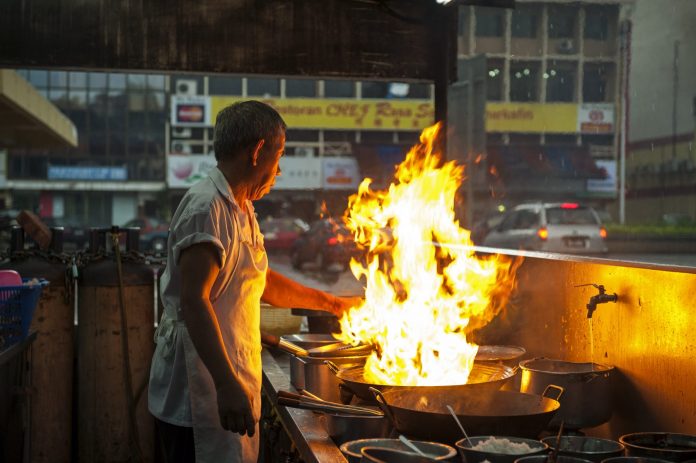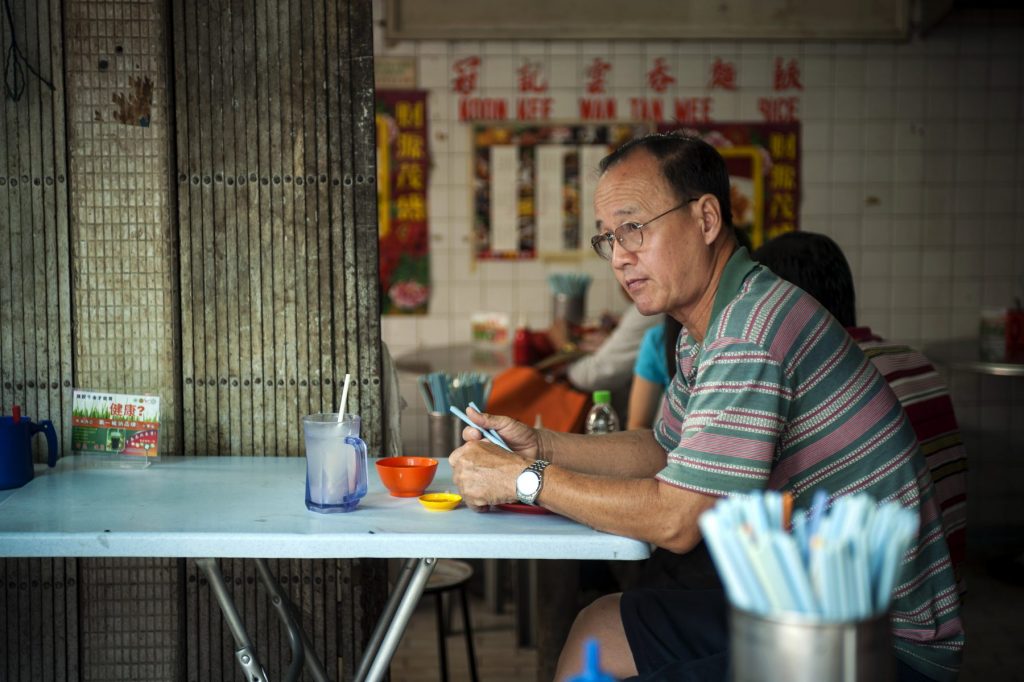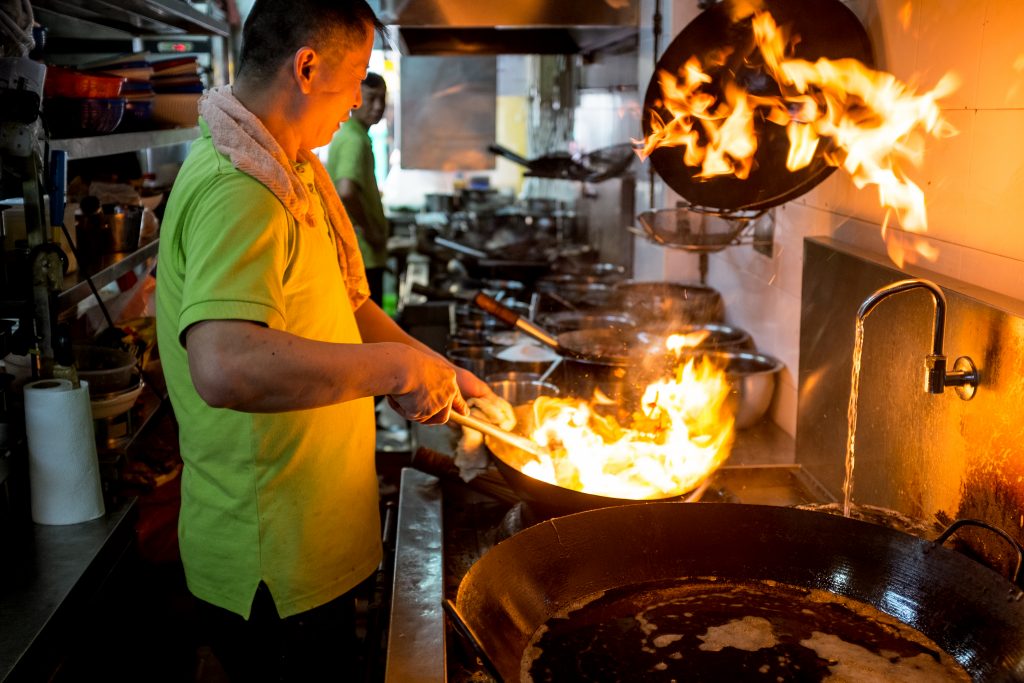
An uncertain future looms for the street eats sellers of Asia. As governments from China to Indonesia make plans to sweep woks of hot oil off the pavements, the livelihood of the humble hawker hangs in the balance
Text Rachel Genevieve Chia
Photos Scott Woodward
When Wanlop Suwandee, chief adviser to Bangkok’s governor, announced a blanket ban on street hawkers in the Thai capital this April, the backlash was immediate.
News outlets slammed the administration for culling a culinary community that is rated as among the finest street food destinations in the world; pictures depicting eerily empty hawker haunts of Siam Square, Pratunam and Saphan Lek market – where hawkers had been run out by the military – made the rounds online, and lovers of Thai street food flooded social media in dismay.
But within a week, the narrative changed. On April 21, Wanlop told CNN that he had been misquoted. The Tourism Authority of Thailand (TAT) issued a press release assuring tourists that the city would continue to offer its famed street fare, albeit with additional hygiene measures.
“While there are measures in place to control food vendors and enforce current regulations, there is no outright ban on the sale of street food,” the release stated. It also said that “in Bangkok’s busiest areas, vendors have been required to move to designated zones and nearby markets to operate” to ensure the safety of pedestrians and drivers.
Hot button issue
Congestion and hygiene are hardly new concerns surrounding street food hawking, and Thailand is but the latest in a string of Asian countries whose governments have set their sights on regulating this informal – and sometimes illegal – sector.
Countries like India, Indonesia and Cambodia have employed a combination of measures to manage hawker populations, including crackdowns, licencing, and relocation to designated areas. This is often driven by concerns about food safety, poor waste disposal, and clogged streets, according to the Food and Agriculture Organization of the United Nations (FAO).
“Street foods often escape formal inspection and control. They can therefore both be the source of food safety problems and contribute to the deterioration of environmental hygiene,” says Sridhar Dharmapuri, a senior food safety and nutrition officer from the FAO’s regional office in Bangkok.
“This is accentuated by issues such as the lack of a safe water supply, which is a key source of contamination of utensils, plates and food itself. The lack of defined public spaces for vendors to function also leads them to unhygienic and inappropriate spots near drains or garbage dumps.”
He said that the FAO is working with city corporations to identify public spaces that can be developed as street food courts to reduce congestion on roads and pavements, and with vendors and governments to implement a food and environmental hygiene code.
But tensions remain. Though well-intentioned, policies impacting street hawkers are often met with public resistance.
In one extreme case, riots broke out in Hong Kong’s Mongkok district last January during a crackdown on unlicenced hawkers during Chinese New Year. The bloody altercation between police and protesters – dubbed the “Fishball Revolution”, after the popular street snack – saw over 90 injured and 61 arrested.
The street food industry is an important first job-provider for many people, and prevents vulnerable social groups from slipping into poverty. The significance of this in Asian society has been ignored for too long by politics.
– Florentinus Gregorius Winarno, “Father of Indonesian food science”
“In many cases, authorities have forcibly evicted street vendors in the name of urban order and cleanliness. But street vendors often resist such evictions and demand space for their businesses,” says Dr Deden Rukmana, who served as an urban planner in Indonesia for eight years.
Dr Rukmana, currently the coordinator for the Urban Studies and Planning programme at Savannah State University in the US, says that governments should pass laws, such as Indonesia’s Spatial Planning Act, to reserve space for hawkers in urban plans.
Heritage lost?
As Asian nations aggressively pursue development, hawkers are tangled up in a country’s attempts to clean up its image.
Policies of countries aspiring to regulate street hawkers are often compared to Singapore’s, which successfully relocated itinerant street hawkers to permanent areas, known as hawker centres, in the 1970s.
“Back then, people hawked their family’s heritage recipes on the street to make a living,” says KF Seetoh, founder of Makansutra, a Singapore-based company that organises the annual World Street Food Congress. “This food heritage was preserved when the government, who realised hawkers were clogging up the arteries of roads and drainage systems, rehoused them into the hawker centres Singapore is now famous for.”
Singapore’s hawkers were thrown into the spotlight last year, when two hawker stalls were awarded Michelin stars for the first time in history. However, despite success at getting its hawkers off the streets and into the Michelin annals, the country’s policies have been criticised for oversanitising street food.
“Hawker food in Singapore is a lot more hygienic compared to the rest of Asia due to governmental control,” says Seth Lui, a blogger who covers street food across Asia. “However, it has also lost its exoticness.”
The country’s hawker trade also seems to be suffering. With a median age of 59 and a national retirement age of 62, concerns abound that hawker culture will soon fade away, taking their precious flavours with them.
Related Story
“We do want to pass on the recipe, but no one can find successors,” says Tan Mui Heok, 52, a hawker at Am Pang QQ Fishball Noodle, from behind a shelf sporting culinary awards. “Young people don’t want a hawker’s job because this is hard work and doesn’t pay much. Rental cost is high and we must price our dishes low.”
Those who have braved the hawker trade speak of backbreaking work. Ivan Yak, 25, sold Hakka noodles – based on his grandmother’s recipe – at a hawker stall in Singapore in 2015. He quit five months later, realising it was not viable to employ assistants.
“It’s definitely more work than it seems. We work from 6am to almost 6pm to clean up and prepare new ingredients for the next day. By the end of the day, it felt like we’d just fought a bear,” he said.
We do want to pass on the recipe, but no one can find successors. Young people don’t want a hawker’s job because this is hard work and doesn’t pay much.
– Tan Mui Heok, 52, hawker
The shrinking hawker trade could mean more than a fall in the number of heritage hawkers – it could also dictate which dishes cease to exist, says Dr Leslie Tay, author of The End of Char Kway Teow and Other Hawker Mysteries. Dr Tay predicts that the country’s push to reduce diseases like diabetes favour the survival of dishes like fish soup and yong tao foo, which are easy to prepare and perceived as healthier. Oily fried dishes like char kway teow and oyster omelette are at risk of fading away.
Visitor appeal
Like Thailand, tourism boards and agencies across Asia are wising up to the possibility of using street food to position the country as a culinary destination.
“We want to attract visitors to come to Myanmar to enjoy our culinary delights,” says May Myat Mon Win, chairperson of Myanmar Tourism Marketing. “From the staple Burmese noodle soups called mohinga to a variety of ethnic specialties, chances are the best dishes you could imagine can be found on the streets.”
“Hawker food is not just an important part of our national identity and multi-cultural heritage, but is also an integral part of Singapore’s dining scene. Hawker fare remains a key feature on many visitors’ itineraries, through which tourists can taste and learn about Singapore’s gastro-heritage,” said Ms Ranita Sundramoorthy, director of attractions, dining and retail at the Singapore Tourism Board.
“Hawker centres are one of the key distinguishing features of Singapore’s food heritage,” added Alvin Tan, an assistant chief executive at Singapore’s National Heritage Board.
Changing the way street food is sold is like forcing an intangible heritage to adapt to new formulation, which eventually will destroy the beauty of its origin.
– Danny Tan, Penang Global Tourism
Other countries, like Malaysia, are leaving the street food sector completely intact. Hawker dishes are one of Malaysia’s main tourist attractions, and the government does not plan to change how street hawkers operate, says a spokesperson from the Malaysia Tourism Promotion Board.
Danny Tan, manager of tourism promotions for Penang Global Tourism, adds: “Changing the way street food is sold is like forcing an intangible heritage to adapt to new formulation, which eventually will destroy the beauty of its origin.”
Food experts are also in consensus that governments are unlikely to succeed in eradicating street hawkers due to their essential role in society.
“In one sense, street hawkers subsidise capitalism and industrialisation by providing cheap food, allowing poorer people to sustain themselves on low wages,” says Dr Kyoko Kusakabe, a researcher on hawkers in Bangkok and Phnom Penh. “Banning street food is not only impossible, but also counterproductive, given the multiple function that street vending provides.”
Dr Kusakabe adds that hawkers who have been evicted off the streets would have difficulty finding alternative ways to survive, due to their limited skills and qualifications.
The hawker’s humble origins are common across Asia, as women, migrant workers from rural areas and those unemployed often sell food to earn income.
Anyone with some capital can start a stall, as they only need basic facilities and food preparation skills, says Florentinus Gregorius Winarno, “the father of Indonesian food science and technology”. Winarno adds: “The street food industry is an important first job-provider for many people, and prevents vulnerable social groups from slipping into poverty. The significance of this in Asian society has been ignored for too long by politics.”
Heritage value
While some countries have launched attempts to clear hawkers off the streets, countries like Singapore and Malaysia – who have made hawker centres a national institution – are desperately trying to save their street food heritage.
Kuala Lumpur and Penang have passed laws that only allow locals to cook hawker food, to preserve its authenticity. Kuala Lumpur has also been encouraging street hawkers to relocate to food trucks. In Singapore, the government launched programmes pairing new hawkers with experienced ones, offering a place to test their recipes before starting a stall.
Existing trends in the business include a move to create fusion dishes, and introducing higher quality ingredients. These are mostly initiated by young hawkers like Lenard Tan, 19, who will take over his mother’s porridge stall, Ah Yee Congee.
“I’d like to include more menu items that appeal to younger people,” says Tan.
Heritage hawkers are now icons – a face, place, and taste that links the food to the land.
– K F Seetoh, Makansutra
Should hawker centres die out, they might be replaced with food halls that charge higher prices and raise the profile of the chefs, predicts Elizabeth Bennett, who researched Singapore’s hawker centres from a historical and cultural perspective under a Fulbright grant.
Makansutra’s KF Seetoh thinks that food parks could be the future, where people can experience the charm of eating on the street in a hygienic manner. A mushrooming number of street food events worldwide also indicate a growing appreciation for the heritage value of such food culture.
“Hawker food is heritage food; it is a celebration of who you are in the form of food,” says Seetoh. “Heritage hawkers are now icons – a face, place, and taste that links the food to the land.”
For more stories and photographs from this issue, see Asian Geographic Issue 127, 2017.





![The Road to Independence: Malaya’s Battle Against Communism [1948-1960]](https://asiangeo.com/wp-content/uploads/2021/07/WhatsApp-Image-2021-07-26-at-11.07.56-AM-218x150.jpeg)






